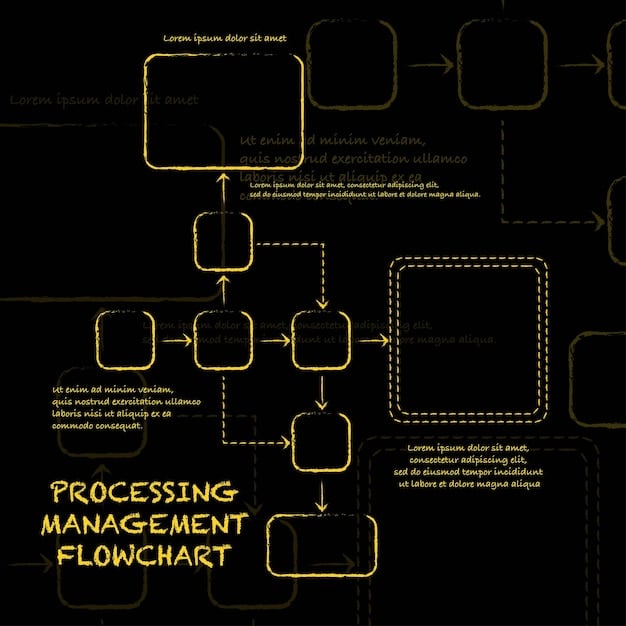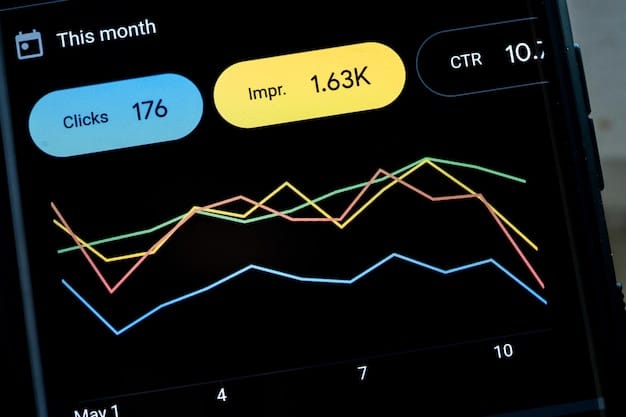Optimize Business Operations: Boost Efficiency and Profitability

Optimizing business operations is essential for achieving increased efficiency and profitability by streamlining processes, leveraging technology, and fostering a culture of continuous improvement.
Is your business running as efficiently as it could be? Discover how to optimize your business operations for increased efficiency and profitability, unlocking your company’s full potential.
Understanding Business Operations Optimization
Business operations encompass all the activities involved in producing and delivering goods or services. Optimizing these operations is about making them as efficient and effective as possible, leading to increased profitability.
It’s not just about cutting costs; it’s about strategically aligning resources, processes, and technology to achieve business goals. A well-optimized operation can lead to:
- Reduced waste and inefficiencies
- Improved productivity and output
- Enhanced customer satisfaction
- Increased profitability and revenue
Ultimately, optimizing business operations is a continuous process of assessment, improvement, and adaptation to changing market conditions. It requires a holistic approach that considers all aspects of the business.

Identifying Areas for Improvement
Before implementing any changes, it’s crucial to identify areas where operations can be improved. This involves a thorough assessment of existing processes and workflows.
Start by mapping out key processes, from order fulfillment to customer service. Identify bottlenecks, redundancies, and areas where errors or delays commonly occur. Look for opportunities to streamline workflows and eliminate unnecessary steps.
Data Analysis and Key Performance Indicators (KPIs)
Analyzing data is essential for identifying areas of improvement. Track key performance indicators (KPIs) related to efficiency, productivity, and profitability. This will provide valuable insights into operational performance.
Employee Feedback and Input
Don’t underestimate the value of employee feedback. Those who work directly with processes often have valuable insights into potential areas for improvement. Encourage open communication and solicit suggestions from your team.
Consider factors such as:
- High error rates in specific processes
- Long lead times for product delivery
- Customer complaints related to service quality
- High operational costs compared to industry benchmarks
By carefully analyzing data and gathering feedback, you can identify specific areas where operational improvements can have the greatest impact on efficiency and profitability.
Implementing Technology Solutions
Technology plays a crucial role in optimizing business operations. Implementing the right technology solutions can automate tasks, improve communication, and enhance decision-making.
Explore opportunities to leverage technology to streamline workflows, reduce manual effort, and improve data accuracy. Consider solutions such as cloud-based software, automation tools, and data analytics platforms.
CRM (Customer Relationship Management) Systems
CRM systems can help streamline sales and marketing processes, improve customer service, and track customer interactions. This can lead to increased sales and customer loyalty.
ERP (Enterprise Resource Planning) Systems
ERP systems integrate various business functions, such as finance, HR, and supply chain management, into a single platform. This can improve communication, reduce data silos, and enhance overall operational efficiency.
Automation Tools and Robotics
Automation tools and robotics can automate repetitive tasks, such as data entry, order processing, and manufacturing. This can free up employees to focus on more strategic activities and reduce the risk of human error.
Streamlining Processes and Workflows
Streamlining processes and workflows is essential for eliminating waste, reducing redundancies, and improving overall efficiency. This involves analyzing existing processes, identifying bottlenecks, and implementing changes to improve flow.
Focus on simplifying complex processes, eliminating unnecessary steps, and automating tasks where possible. This can lead to faster turnaround times, reduced costs, and improved customer satisfaction.
Standard Operating Procedures (SOPs)
Develop standard operating procedures (SOPs) to ensure consistency and efficiency in key processes. SOPs should clearly define each step in the process, as well as roles and responsibilities.
Lean Principles and Waste Reduction
Apply lean principles to identify and eliminate waste in your operations. This includes waste related to time, resources, and materials. Focus on streamlining processes to reduce waste and improve flow.

A streamlined process leads to efficient operations with:
- Elimination of bottlenecks
- Reduced cycle times
- Improved capacity utilization
- Greater customer satisfaction
By carefully analyzing and streamlining processes, businesses can significantly improve their operational efficiency and profitability.
Improving Communication and Collaboration
Effective communication and collaboration are essential for ensuring that everyone is on the same page and working towards common goals. This involves establishing clear communication channels, promoting teamwork, and fostering a culture of collaboration.
Encourage open communication between departments and teams, and provide employees with the tools and resources they need to collaborate effectively. This can lead to better decision-making, improved problem-solving, and increased innovation.
Regular Team Meetings and Updates
Hold regular team meetings to discuss progress, address challenges, and share updates. This can help ensure that everyone is aligned and working towards common goals.
Collaboration Tools and Platforms
Use collaboration tools and platforms to facilitate communication and collaboration between employees. This can include tools such as instant messaging, video conferencing, and project management software.
Cross-Functional Collaboration
Encourage cross-functional collaboration to break down silos and promote knowledge sharing. This can lead to better decision-making and more innovative solutions.
Continuous Monitoring and Improvement
Optimizing business operations is an ongoing process that requires continuous monitoring and improvement. This involves tracking key performance indicators (KPIs), analyzing data, and making adjustments as needed to ensure that operations remain efficient and effective.
Foster a culture of continuous improvement, where employees are encouraged to identify and implement improvements to processes and workflows. Regularly review operational performance and identify opportunities for further optimization.
Establish KPIs and Metrics
Establish key performance indicators (KPIs) and metrics to track operational performance. This can include metrics such as throughput, cycle time, error rates, and customer satisfaction.
Regular Performance Reviews
Conduct regular performance reviews to assess progress and identify areas for improvement. This should involve analyzing data, gathering feedback, and identifying opportunities to optimize operations further.
Adapt to Changing Market Conditions
Be prepared to adapt to changing market conditions and customer needs. This may require adjusting processes, implementing new technologies, or exploring new business models. Agility and adaptability are essential for long-term success.
| Key Point | Brief Description |
|---|---|
| 💡 Process Streamlining | Efficiently manage workflows by eliminating redundancies and optimizing processes. |
| 💻 Technology Adoption | Integrate technologies like CRM and ERP to enhance productivity. |
| 🤝 Communication | Improve transparency and teamwork through enhanced communication. |
| 📊 Data Analysis | Use KPIs and metrics to drive continuous improvement. |
FAQ
▼
Business operations encompass all activities within a company that produce and deliver goods or services, including manufacturing, sales, and customer support.
▼
Optimizing operations leads to higher efficiency, reduced costs, increased productivity, and better customer satisfaction, which ultimately drives profitability and growth.
▼
Technology automates tasks, improves data accuracy, facilitates communication, and enhances decision-making through tools like CRM, ERP, and robotics.
▼
Common areas include streamlining processes, reducing waste, enhancing communication, and implementing technology solutions to address inefficiencies.
▼
Operations should be continuously monitored and reviewed regularly to identify new opportunities for improvement and adapt to changing market conditions and customer needs.
Conclusion
Optimizing your business operations is a critical step towards achieving increased efficiency and profitability. By identifying areas for improvement, implementing technology solutions, streamlining processes, and promoting effective communication, you can unlock your company’s full potential and achieve sustainable growth.